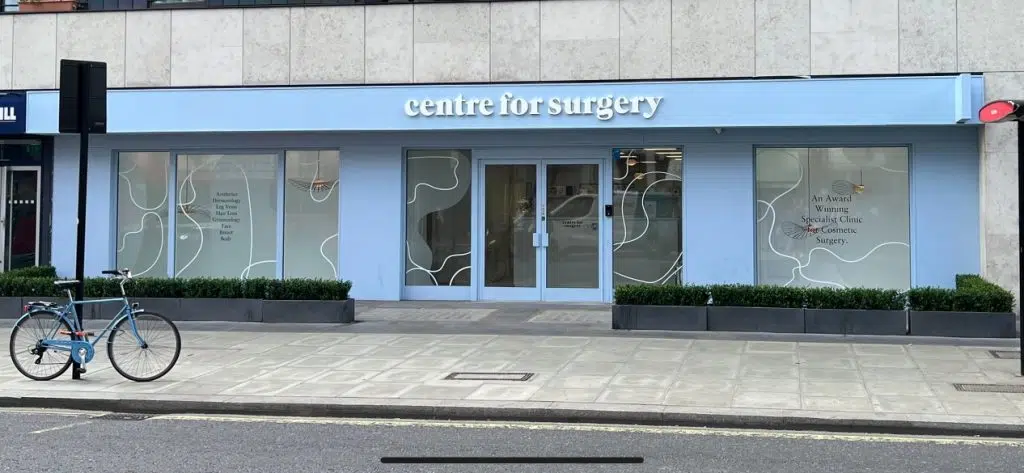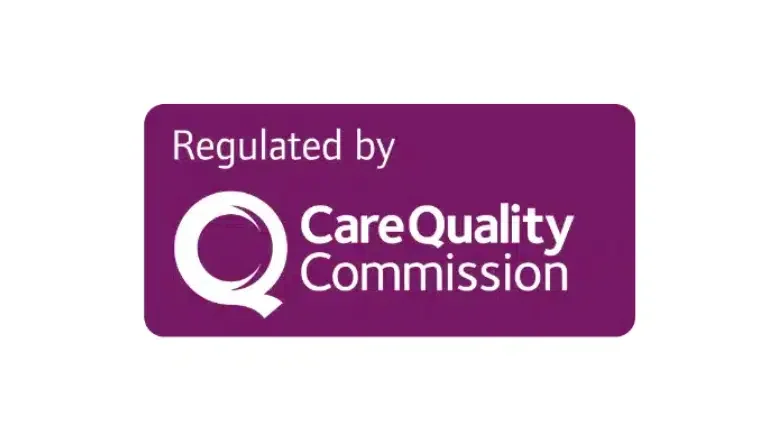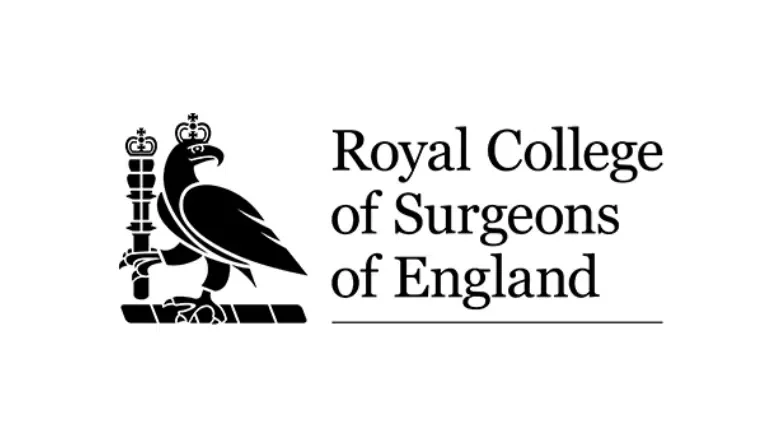Male breast reduction is a surgical procedure used to get rid of gynecomastia or gyno. Gynecomastia or “man boobs” refers to the enlargement of the male breast tissue. This can cause the mail chest to take on a feminine appearance. Gynecomastia surgery involves surgically removing excess breast tissue and fat to achieve a masculine-looking chest. Centre for Surgery is the leading plastic surgery clinic in London and is a centre of excellence for male breast reduction surgery. Here, we answer your most commonly asked questions about male breast reduction and gynecomastia.
GYNECOMASTIA OVERVIEW
What is gynecomastia?
Gynecomastia is a medical condition in which there is an abnormal growth of breast tissue in males, resulting in enlarged breasts. This can be caused by a hormonal imbalance, certain medications, or an underlying health condition. Treatment options include surgery, hormone therapy, or a combination of both.
RELATED: What is gynecomastia?
What are the stages of gynecomastia?
Gynecomastia is typically classified into four stages based on the degree of breast tissue development:
- Stage 1: There is a small amount of breast tissue present, and the condition is often referred to as “pseudogynecomastia” because it is caused by an accumulation of fat rather than breast tissue.
- Stage 2: There is a moderate amount of breast tissue present, and the nipple may begin to puff out slightly.
- Stage 3: There is a significant amount of breast tissue present, and the nipple and areola may begin to enlarge.
- Stage 4: There is a large amount of breast tissue present, and the breast may resemble the breast of a female.
RELATED: Gynecomastia vs Chest Fat – How to Tell the Difference
Does gynecomastia go away?
Gynecomastia, or the abnormal growth of breast tissue in males, can go away without treatment, but it depends on the underlying cause. Some common causes of gynecomastia include hormonal imbalances, certain medications, and certain medical conditions.
RELATED: Does Gynecomastia Go Away?
If the cause is a hormonal imbalance, such as an increase in oestrogen or a decrease in male hormones. In that case, the condition may resolve on its own as the hormones return to normal levels. However, if the cause is related to a medication or an underlying medical condition, the condition may persist and require treatment.
Is gynecomastia dangerous?
Gynecomastia, or the abnormal growth of breast tissue in males, is not typically considered to be dangerous. However, it can cause physical discomfort and embarrassment and affect self-esteem. In some cases, it can be a symptom of an underlying medical condition that requires further evaluation and treatment.
In rare cases, the breast tissue may be hard or painful. This could indicate a breast tumour, which requires further evaluation and treatment. It’s important to consult a doctor if you notice any changes in your breast tissue, such as a hard lump or pain.
Do I need gynecomastia surgery?
Gynecomastia surgery, also known as male breast reduction, may be necessary if you have an abnormal growth of breast tissue that causes discomfort, embarrassment, or affects your self-esteem. However, whether or not you need surgery to treat your gynecomastia depends on your individual condition and goals.
If non-surgical options have not been successful or if you have a significant amount of breast tissue, surgery may be an appropriate option. Surgery can remove excess fat and breast tissue, resulting in a flatter, more masculine chest.
What are the benefits of gynecomastia surgery?
Gynecomastia surgery, also known as male breast reduction, can provide several benefits, including:
- Improved physical appearance: The surgery can remove excess fat and breast tissue, resulting in a flatter, more masculine chest.
- Increased self-esteem and confidence: Many men who have gynecomastia feel self-conscious and embarrassed about their appearance. Surgery can help to improve their self-esteem and confidence in their appearance.
- Relief from physical discomfort: Men with gynecomastia may experience physical discomfort or pain in the breast area. Surgery can provide relief from these symptoms.
- Improved quality of life: Gynecomastia can have a negative impact on a man’s physical, emotional and social life. Surgery can help to improve the quality of life by addressing the physical and emotional concerns caused by the condition.
- Better fitting clothing: Men with gynecomastia may have difficulty finding clothing that fits properly. Surgery can help to improve their ability to find clothing that fits and flatters their body shape.
- Long-lasting results: The surgery typically produces long-lasting results and can help to achieve a more masculine and contoured chest, and improve overall self-image.
SUITABILITY FOR GYNO SURGERY
Am I suitable for male breast reduction?
The best way to determine if you are a suitable candidate for male breast reduction surgery is to consult with a qualified and experienced surgeon. They will be able to evaluate your medical history and current condition, as well as your goals for the surgery.
In general, you may be a good candidate for male breast reduction surgery if you meet the following criteria:
- You are in good physical and mental health
- You have realistic expectations for the surgery
- You have a significant amount of breast tissue that causes discomfort, embarrassment or affects your self-esteem
- You have tried non-surgical options such as weight loss or hormone therapy without success
- You are not planning on significant weight loss in the future
- You are not taking medications or using recreational drugs that may contribute to gynecomastia
GYNECOMASTIA SURGERY PROCEDURE
What are the surgical options for gyno surgery?
There are several surgical options for male breast reduction, also known as gynecomastia surgery, which can be performed by a qualified and experienced plastic surgeon. These options include:
- Liposuction: This is a minimally invasive procedure that involves removing excess fat from the breast area using a thin tube called a cannula.
- Excision: This procedure involves making an incision and removing the breast tissue. This method is typically used for patients with a significant amount of breast tissue or those who have had minimal success with liposuction alone.
- Combination of Liposuction and Excision: This is a procedure that combines liposuction and excision to remove both fat and breast tissue. This is typically used for patients who have both excess fat and breast tissue.
- Skin excision: This procedure is used for patients who have undergone significant weight loss or have sagging skin after surgery. It involves removing excess skin to tighten and reshape the chest. (see video below of what skin excision involves)
What is a Webster’s incision?
A Webster’s incision, also known as a “Webster’s technique,” is a surgical incision used in gynecomastia surgery, also known as male breast reduction surgery. It is a technique for removing breast tissue and skin from the chest area, and it is usually used when there is a significant amount of excess skin or when the nipple and areola need to be repositioned.
The Webster’s incision is made around the areola, which is the pigmented skin surrounding the nipple. The incision circles the areola in a circular manner and extends vertically down the chest. This incision allows the surgeon to remove breast tissue, reshape the chest and reposition the nipple and areola if necessary.
Webster’s incision is a more invasive technique that leaves more visible scarring than other incision techniques. It’s often used when the patient has a significant amount of excess skin and when the nipple and areola need to be repositioned.
Will I have drains after gynecomastia surgery?
Drains are sometimes used after gynecomastia surgery, also known as male breast reduction surgery, to prevent the buildup of fluids and blood under the skin. The surgeon usually determines the use of drains based on factors such as the type of surgery performed, the size of the breast tissue removed, and the individual patient’s healing process.
Drains are small tubes inserted through small incisions near the surgical site. They are left in place during the healing process to allow fluids to drain away from the surgical site. The fluids are collected in a small container attached to the end of the tube. The container is emptied as necessary, and the fluid is measured to monitor the amount of fluid that is draining.
The drains are usually removed a day or two after surgery or when the amount of fluid is low enough. After the removal of the drains, the patient will have to keep the incision site clean and dry, and the surgeon may advise wearing a compression garment to help reduce swelling and support the healing process.
RECOVERY AFTER MALE BREAST REDUCTION
How long does it take to recover from a male breast reduction?
Recovery time after male breast reduction surgery can vary depending on several factors, including the extent of the procedure and the patient’s overall health. In general, patients should expect to take 1-2 weeks off work to recover, but it could take longer depending on the type of work and the extent of the surgery.
RELATED: Recovery after Gynecomastia Surgery – Top Tips & Timeline
During the recovery period, patients will experience some swelling, bruising, and discomfort, which can be managed with pain medication prescribed by the surgeon. To avoid complications and promote healing, patients should avoid any strenuous activity and follow the surgeon’s instructions.
Will I have visible scarring after gyno surgery?
Yes. There will be a certain degree of scarring after gyno surgery. Your surgeon will position incisions in natural skin folds to minimise their appearance. Scars gradually become lighter and flatter over time. Gynecomastia scars can be easily covered up with most types of clothing.
RELATED: Gynecomastia Scars – Treatment, Healing and Fading
RISKS AND COMPLICATIONS OF GYNECOMASTIA SURGERY
What are the risks of male breast reduction?
Male breast reduction, also known as gynecomastia surgery, carries some risks, as with any surgical procedure. These may include:
- Anaesthesia risks: complications related to the anaesthesia used during the surgery
- Haematoma: bleeding under the skin, which may require further surgery to drain
- Infection: infection at the incision site
- Changes in sensation: temporary or permanent changes in sensation in the breast or nipple area
- Unsatisfactory results: dissatisfaction with the final appearance of the breast
- Scarring: visible scars from the incision site
- Asymmetry: unevenness in the size or shape of the breasts after surgery
- Recurrent gynecomastia: in some cases, the breast tissue may return even after surgery
RELATED: Crater Deformity After Gynecomastia
Is gynecomastia surgery painful?
Gynecomastia surgery, also known as male breast reduction, is typically performed under general anaesthesia, which means that you will be asleep during the procedure and should not feel any pain. After the surgery, you may experience some discomfort, swelling, and bruising, which can be managed with pain medication prescribed by the surgeon.
During the first few days after the surgery, you may experience some pain and discomfort, but it should gradually improve as you heal. Your surgeon will give you instructions on how to manage pain and discomfort and minimise the risk of complications.
GYNECOMASTIA RESULTS
Does male breast reduction last forever?
Male breast reduction, also known as gynecomastia surgery, typically produces long-lasting results. However, the permanency of the results can depend on the patient’s overall health, lifestyle choices, and other factors.
The removal of breast tissue and/or fat during surgery is permanent, but in some cases, if the patient gains a significant amount of weight, the breast tissue may return. Similarly, if the underlying cause of the gynecomastia is a hormonal imbalance or a medication, it could come back if the patient starts retaking the medication or the hormonal imbalance persists.
Can gynecomastia grow back after surgery?
Gynecomastia can recur after surgery, although this is relatively uncommon. Factors that can increase the risk of recurrent gynecomastia include obesity, the use of certain medications or recreational drugs, and an underlying hormonal imbalance. In some cases, the tissue that was removed during surgery may be replaced by fat, which can cause the appearance of breast tissue to return. However, this is not always the case, and most patients are satisfied with the results of their surgery.
RELATED: Can gynecomastia come back after surgery?
Can a male breast reduction be done twice?
Male breast reduction, also known as gynecomastia surgery, can be performed more than once, but it depends on the individual case and the reason for the second surgery. A second surgery may be necessary if the patient has recurrent gynecomastia, which is the recurrence of breast tissue after the initial surgery. This can happen if the underlying cause is not addressed, such as a hormonal imbalance or medication, or if the patient gains a significant amount of weight.
RELATED: Gynecomastia Revision Surgery – All You Need To Know
If a second surgery is needed, you must have a candid conversation with your surgeon about your expectations, the risks and benefits of the surgery, and the potential outcomes. A qualified and experienced surgeon can evaluate the case and discuss the possible outcomes and risks with the patient.
FUNDING FOR MALE BREAST REDUCTION
Can I get gynecomastia surgery on the NHS?
Whether or not gynecomastia surgery, also known as male breast reduction, is available on the National Health Service (NHS) in the UK depends on the specific policies of the local NHS trust and the assessment of the individual case by the medical team.
Generally, gynecomastia surgery is considered a cosmetic procedure and may not be covered by the NHS. However, in some cases, where the gynecomastia is causing significant distress or physical discomfort or is a symptom of an underlying medical condition, the NHS may cover the surgery.
Is gynecomastia surgery worth it?
Gynecomastia surgery, also known as male breast reduction, can be a highly effective way to improve the appearance of the chest and reduce the physical discomfort and emotional distress caused by gynecomastia. However, whether or not the surgery is worth it depends on your individual condition and goals.
If non-surgical options have not been successful or if you have a significant amount of breast tissue, surgery may be an appropriate option. Surgery can remove excess fat and breast tissue, resulting in a flatter, more masculine chest.
RELATED: Is gynecomastia surgery worth it?
Which celebrities have had gynecomastia surgery?
Many celebrities have had gynecomastia surgery, but most of them do not publicly disclose it. In general, celebrities do not publicly share their health information and plastic surgery procedures they have undergone. It’s also important to remember that many people have gynecomastia, and not all of them choose to have surgery or to go public with it.
However, some celebrities have been open about their surgery and have spoken publicly about their experience. Some examples include:
- Simon Cowell: The music producer and television personality has been open about his gynecomastia surgery, stating that he had it done to improve his appearance and boost his confidence.
- 50 Cent: The rapper and actor has spoken publicly about his surgery and has said that he had the surgery done to improve his appearance and boost his confidence.
- Jack Osbourne: The television personality has said that he had gynecomastia surgery after losing a significant amount of weight.
- John Travolta: The actor has been open about his surgery and has said that he had it done to improve his appearance and boost his confidence.
RELATED: Which celebrities have had gynecomastia?
Male breast reduction at Centre for Surgery
Centre for Surgery is the leading plastic surgery clinic in London and is considered one of the top centres for gynecomastia surgery in the UK. Our plastic surgeons have years of experience in the treatment of all grades of gynecomastia, from mild to severe. Book a collection by calling us at 020 7993 4849 or fill out the contact form below, and one of our patient coordinators will be more than happy to book you in.












